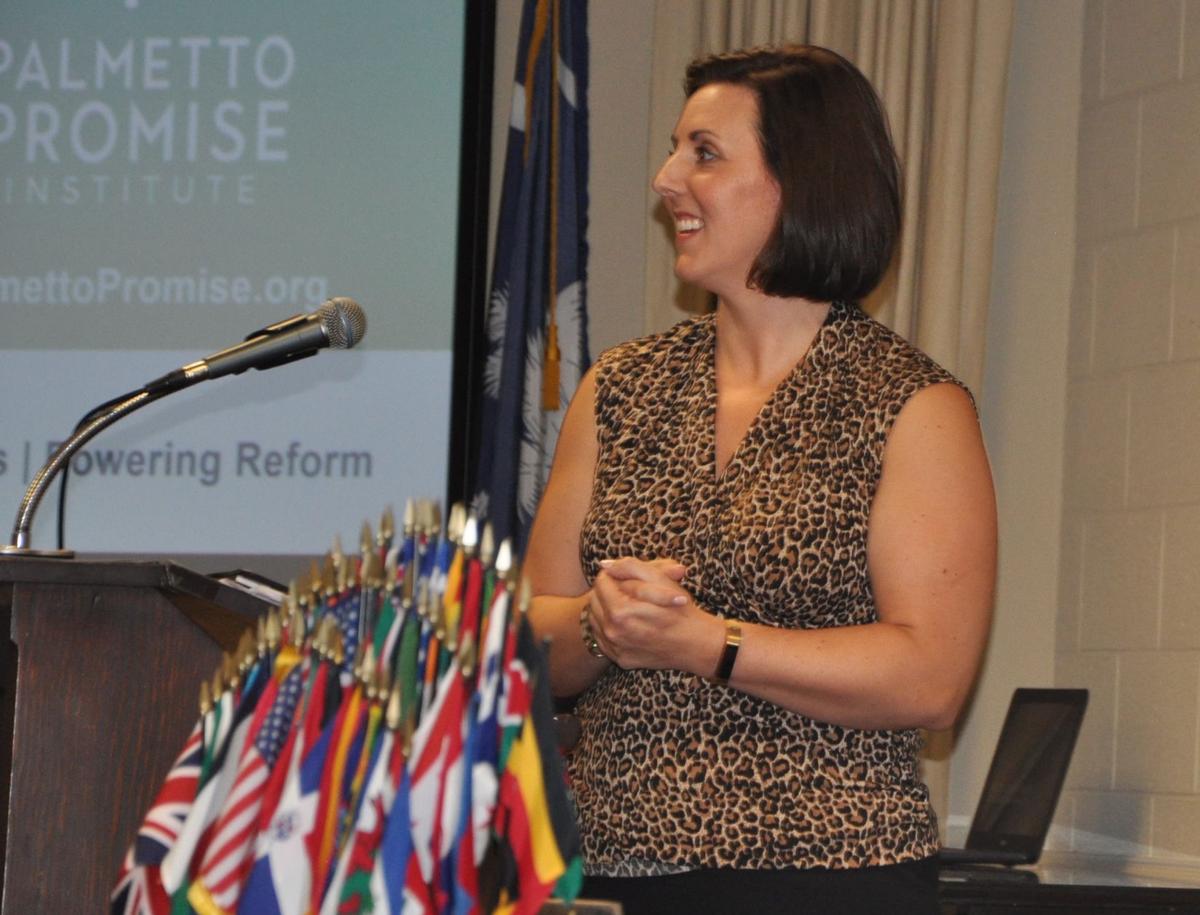South Carolina is in a “very urgent and crisis-based situation” when it comes to public education, Palmetto Promise Institute President and CEO Ellen Weaver told the Rotary Club of Aiken during the organization’s meeting Monday at Newberry Hall.
She provided some alarming statistics, and she also talked about a plan developed by Palmetto Promise, a think tank based in Columbia, to correct some of the problems.
Weaver described South Carolina’s education system as being “mired in the past,” with a one-size-fits-all approach that involves “everyone learning the same thing on the same page at the same time.”
As a result, “I believe South Carolina is in a downward spiral and is failing not only students but also the teachers we have trusted to teach those students within the system,” Weaver said.
The Palmetto State, she continued, is “at or near the bottom of every major national ranking of public education outcomes.”
Other evidence that South Carolina’s education system is struggling, Weaver said, includes the following:
• Two-thirds of third through eighth graders did not meet grade level expectations for both English and math on state tests in 2017-18.
• The total number of graduating teachers from four-year schools was down 30 percent over four years.
• Twenty-two percent of first-year teachers quit in 2016-17, and 38 percent quit within the first five years of their employment.
Palmetto Promise’s H.O.P.E. Plan has three strategies to address those issues.
H.O.P.E. stands for Help Our Pupils Excel.
“I think we have an opportunity to create an education environment where every student has the opportunity to reach their full potential,” Weaver said.
One of the H.O.P.E. Plan’s strategies is to streamline funding and shrink bureaucracy.
South Carolina’s current education funding formula involves “a complex spider web,” which has many different pots of money and is “one of the most complicated in the nation,” Weaver said. “It’s the exact opposite of what truly student-centered funding reform would look like.”
As the result of such a reform, she explained, money for education would be allocated based on specific student needs instead of being put into programs.
Under that formula, “you have a core student amount,” Weaver said. “Then there is money added based on student need, whether the student is in poverty or whether a student has special needs” because of a disability.
Another H.O.P.E. Plan strategy would expand school choice, which offers a student the chance to attend a school other than his or her district’s public school.
In some cases, that alternative institution is a private school.
“What you often hear is that school choice is going to starve public schools or it is going to hurt public education,” Weaver said. “The very opposite is true when you look at states like Florida, which has actually seen enormous success (in improving education outcomes) through school choice.”
The H.O.P.E. Plan’s third strategy is to support teachers better.
One way to do that is to “create more pay flexibility,” Weaver said. “Rock star teachers should make rock star salaries.”
In other words, she added, school districts “should be able to differentiate pay (based on performance).”
In addition, Weaver believes, pathways to teacher certification and recertification should be expanded.
That would “get more people actually into the teaching profession,” she said.
For more information about Palmetto Promise and the H.O.P.E. Plan, visit palmettopromise.org.
